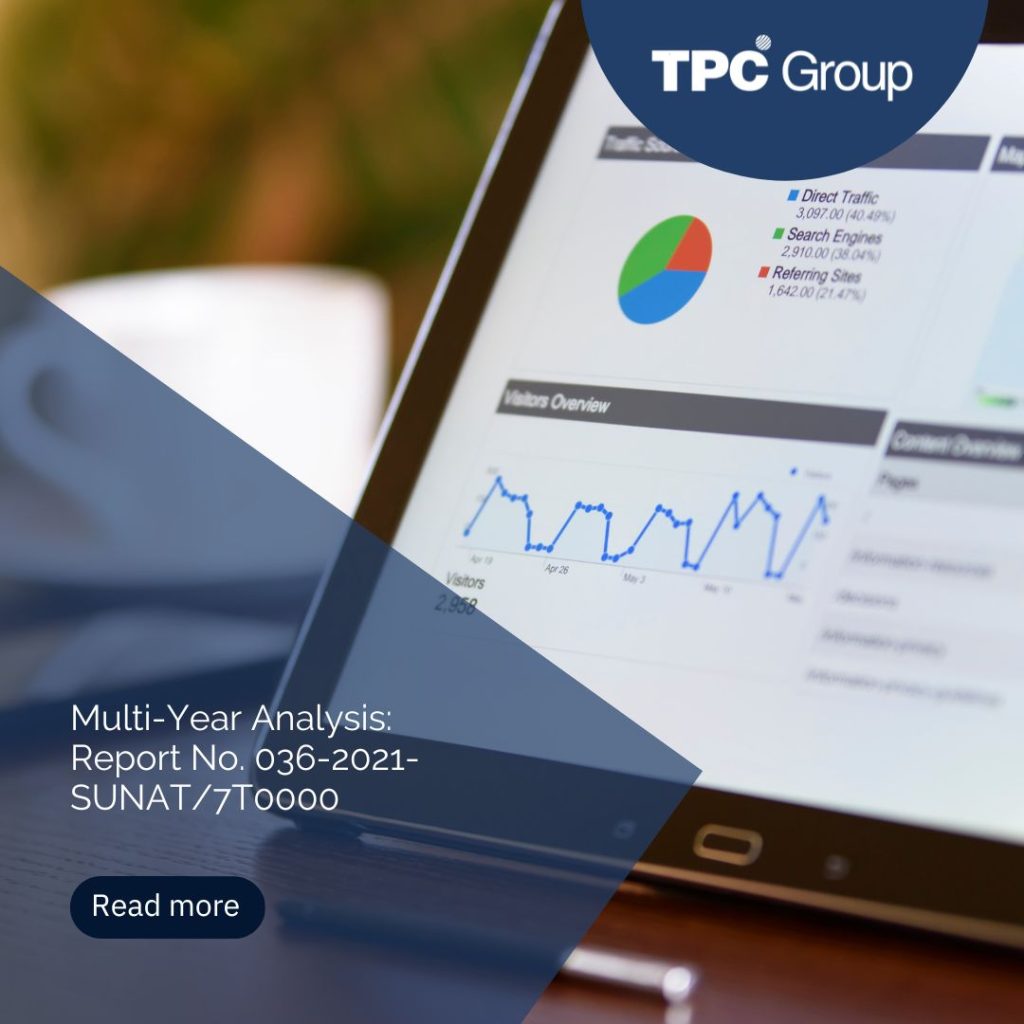Report No. 036-2021-SUNAT/7T0000 arises to specify the use of Multi-Year Information in the Transfer Pricing analysis and the possibility of considering a non-domiciled person as a party analyzed concerning the comparability analysis. This article will explore the queries about the Peru SUNAT transfer pricing rules addressed in the aforementioned report.
1. Impact of the Use of Multi-year Information in the Transfer Pricing Analysis
OECD Guidelines
In Chapter III, Section B.5, the OECD sets out crucial guidelines for the comparability analysis. The multi-year data review is important but not as a systematic requirement. The organization emphasizes the need to use multi-year data only when it adds value to the Transfer Pricing analysis, rejecting the imposition of prescriptive guidelines on the period.
The OECD Guidelines provide the option of incorporating multi-year information into the comparability analysis, either to assess the transaction subject to the Transfer Pricing rules, to determine the comparability of a transaction between independent parties, or to establish the arm’s length range. Conversely, these data over several years should be used only when they contribute to the Transfer Pricing analysis.
The OECD highlights that the inclusion of multi-year data can enhance the selection of comparable third parties by allowing the identification of significant variations in results concerning comparability characteristics. This identifying ability occasionally rejects unfitting comparables for the established criteria.
Domestic legislation
Article 110 of the Income Tax Law regulations provides the possibility of considering taxpayer data and comparable transactions from two or more years before or after the audited period exclusively to evaluate the comparability of transactions (Income Tax Law, Article 110). Conversely, it should be noted that, according to the conclusion of the Tax Administration in Report No. 036-2021-SUNAT/7T0000, this multi-year information does not affect the adjustments contemplated in subsection c) of Article 32-A of the Income Tax Law (Report No. 036-2021-SUNAT/7T0000).
The Income Tax Law establishes a limitation on the use of multi-year financial information by stating that it is not possible to use it in the construction of the interquartile range of any method (RLIR, Article 110). This restriction precludes its application in the determination of price ranges.
Financial Information Used in the Determination of Tax Adjustments
During the audit of the Transfer Pricing Study, the Tax Administration constructs the interquartile range exclusively using the financial information of the audited period of both the analyzed entity and comparable entities (Report No. 036-2021-SUNAT/7T0000). In this context, there is evidence of coherence between international guidelines and practices applied at the local level in the determination of fiscal adjustments.
2. Non-domiciled subject as an analysed party
OECD Guidelines
The OECD guidelines state that the tested party in a transaction will be the one carrying out the easiest transactions to identify and evaluate with the most reliable comparable information without specifying whether it has to be domiciled or not.
Domestic Legislation
Given that the Income Tax Law and the regulations do not contemplate any rule regarding the choice of the “tested party,” the tax administration validates to consider the non-domiciled subject as the tested party, who made a transaction with a taxpayer domiciled in the country, to assess whether the market value rule is met.
3. Conclusions
In conclusion, Report No. 036-2021-SUNAT/7T0000 has been crucial in clarifying the use of Multi-Year Information in the Transfer Pricing analysis and the consideration of non-domiciled subjects as tested parties in the context of Peruvian regulations.
Particularly relevant is the Tax Administration’s interpretation of the use of multi-year information in the context of Article 110 of the RLIR, emphasizing its specific application in the comparability assessment and not in the adjustments contemplated in subsection c) of Article 32-A of the Income Tax Law. In addition, the inclusion of non-domiciled subjects as tested parties broadens the approach, aligning with the OECD guidelines, although the domestic legislation does not specify this. Thus, this report contributes to the coherence between national and international practices in the determination of tax adjustments and Transfer Pricing.




